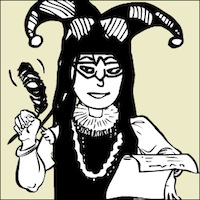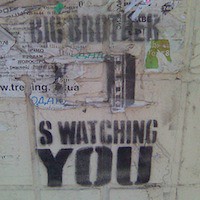Bloody Valentines - February 14, 1929

The origin of Valentine’s Day seems to be shrouded in mystery. Some sources state that it was the date Valentine of Rome was martyred for refusing to abandon his Christian faith. Other sources state that it is the time of year that birds couple off to mate (which has been referenced in literary works by the likes of Chaucer). And still other sources state that it was the traditional date of “love lotteries,” but offer nothing further than that explanation.
Fortunately, today’s article has very little to do with the history of the Hallmark and flower companies’ best business day. Instead, today’s history lesson is something a bit darker from America’s past. Something that I’m sure many would rather forget.
The year was 1929, ten years after the ratification of the 18th Amendment (for more information on this amendment, please see my article "Prohibition"), also known as Prohibition, had been signed into effect. By this time, Al Capone had made a name for himself in Chicago, much to the dismay of George “Bugs” Moran. Organized crime during that time dealt mostly with directly defying Prohibition—and they did it violently.
Capone had spent a good portion of his life establishing himself in the underground of Chicago and New York. Under the tutelage of Frank Yale in New York, Capone learned the ins and outs of discreetly trading whiskey under Prohibition. Once in Chicago, Johnny Torrio took over as Capone’s mentor. When things got bad in 1923—as in, there were multiple hits out on both Torrio and Capone—the men went into hiding. Torrio disappeared to Arkansas and Capone disappeared into the shadows of Chicago.
When Johnny Torrio returned to Chicago in 1925, he had the misfortune of being the target of Bugs Moran. The Moran-Weiss gang hadn’t forgotten Torrio and they were determined to end his life. Moran, however, ran out of bullets. At the hospital, Capone took over for Torrio and set up security to guard the wounded gang leader. As Torrio recovered, he eventually told Capone he was retiring and left his entire business to Capone.
Capone’s sudden rise to prominence in the Chicago underground did little to bolster relations with Moran. In fact, Moran would continue to plague Capone, no matter where Capone went. In January of 1929, Capone was in Florida with Jack “Machine Gun” McGurn discussing the assassination of Bugs Moran. Moran had, at one time or another, tried to assassinate both McGurn and Capone. McGurn came up with a brilliant plan, set it in motion, and made sure that he would not be implicated in the execution.
On February 14, 1929, at approximately 10:30am, seven members of the North Side gang—Moran’s men—entered a Clark Street warehouse where they were expecting to buy imported whiskey at a very handsome price. What they found when they arrived was absolutely nothing. There was no whiskey, and there was no contact. Thinking that the contact may have been running late, they waited. Outside of the warehouse, a police car pulled up and five men climbed out. Much to the later chagrin of McGurn’s men, Moran was running late to the meeting, saw the police car and hung back. The five men—three dressed as police officers and two dressed in trench coats—entered the warehouse. Moran’s men thought the happenings were part of a routine bust, and did exactly as they were told. They lined up against the far wall, hands spread. The five men that entered the building continued to bark orders, then opened fire on the seven. They sprayed bullets along the men’s knees, backs, and heads. Six of the seven men died instantly. Only one survived, briefly, 22 bullet wounds. He later died at the hospital.
Sometimes, the best laid plans of mice and men still ultimately fail. Because Moran was not one of the seven murdered that bloody Valentine’s Day, he instantly pointed his finger at Capone. Capone, however, had been in Florida and denied any involvement with the massacre. The killing all but squelched Moran’s power, leaving Capone in prominence in Chicago. The killing also, however, began to sour Capone’s loyal public. The killing was graphic and violent in nature and the shock and sensationalism of the crime horrified Chicago natives, not to mention the rest of the country. Demands began to be made to shut down the gang wars and to stop the violence that now wreaked havoc in the Nation.
The repeal and cessation of the Prohibition Act would come four years later in the form of the 21st Amendment to the Constitution. Al Capone who was never implicated in the massacre, would later serve time in Alcatraz for income tax evasion. He died January 25, 1947 cardiac arrest associated, most likely, with third stage syphilis.
For more information on the St. Valentine's Day Massacre, check out Robin Rounds Whittemore's article--she's the BellaOnline Crime editor!
Fortunately, today’s article has very little to do with the history of the Hallmark and flower companies’ best business day. Instead, today’s history lesson is something a bit darker from America’s past. Something that I’m sure many would rather forget.
The year was 1929, ten years after the ratification of the 18th Amendment (for more information on this amendment, please see my article "Prohibition"), also known as Prohibition, had been signed into effect. By this time, Al Capone had made a name for himself in Chicago, much to the dismay of George “Bugs” Moran. Organized crime during that time dealt mostly with directly defying Prohibition—and they did it violently.
Capone had spent a good portion of his life establishing himself in the underground of Chicago and New York. Under the tutelage of Frank Yale in New York, Capone learned the ins and outs of discreetly trading whiskey under Prohibition. Once in Chicago, Johnny Torrio took over as Capone’s mentor. When things got bad in 1923—as in, there were multiple hits out on both Torrio and Capone—the men went into hiding. Torrio disappeared to Arkansas and Capone disappeared into the shadows of Chicago.
When Johnny Torrio returned to Chicago in 1925, he had the misfortune of being the target of Bugs Moran. The Moran-Weiss gang hadn’t forgotten Torrio and they were determined to end his life. Moran, however, ran out of bullets. At the hospital, Capone took over for Torrio and set up security to guard the wounded gang leader. As Torrio recovered, he eventually told Capone he was retiring and left his entire business to Capone.
Capone’s sudden rise to prominence in the Chicago underground did little to bolster relations with Moran. In fact, Moran would continue to plague Capone, no matter where Capone went. In January of 1929, Capone was in Florida with Jack “Machine Gun” McGurn discussing the assassination of Bugs Moran. Moran had, at one time or another, tried to assassinate both McGurn and Capone. McGurn came up with a brilliant plan, set it in motion, and made sure that he would not be implicated in the execution.
On February 14, 1929, at approximately 10:30am, seven members of the North Side gang—Moran’s men—entered a Clark Street warehouse where they were expecting to buy imported whiskey at a very handsome price. What they found when they arrived was absolutely nothing. There was no whiskey, and there was no contact. Thinking that the contact may have been running late, they waited. Outside of the warehouse, a police car pulled up and five men climbed out. Much to the later chagrin of McGurn’s men, Moran was running late to the meeting, saw the police car and hung back. The five men—three dressed as police officers and two dressed in trench coats—entered the warehouse. Moran’s men thought the happenings were part of a routine bust, and did exactly as they were told. They lined up against the far wall, hands spread. The five men that entered the building continued to bark orders, then opened fire on the seven. They sprayed bullets along the men’s knees, backs, and heads. Six of the seven men died instantly. Only one survived, briefly, 22 bullet wounds. He later died at the hospital.
Sometimes, the best laid plans of mice and men still ultimately fail. Because Moran was not one of the seven murdered that bloody Valentine’s Day, he instantly pointed his finger at Capone. Capone, however, had been in Florida and denied any involvement with the massacre. The killing all but squelched Moran’s power, leaving Capone in prominence in Chicago. The killing also, however, began to sour Capone’s loyal public. The killing was graphic and violent in nature and the shock and sensationalism of the crime horrified Chicago natives, not to mention the rest of the country. Demands began to be made to shut down the gang wars and to stop the violence that now wreaked havoc in the Nation.
The repeal and cessation of the Prohibition Act would come four years later in the form of the 21st Amendment to the Constitution. Al Capone who was never implicated in the massacre, would later serve time in Alcatraz for income tax evasion. He died January 25, 1947 cardiac arrest associated, most likely, with third stage syphilis.
For more information on the St. Valentine's Day Massacre, check out Robin Rounds Whittemore's article--she's the BellaOnline Crime editor!

Related Articles
Editor's Picks Articles
Top Ten Articles
Previous Features
Site Map
Content copyright © 2023 by Christa Mackey. All rights reserved.
This content was written by Christa Mackey. If you wish to use this content in any manner, you need written permission. Contact Lane Graciano for details.







